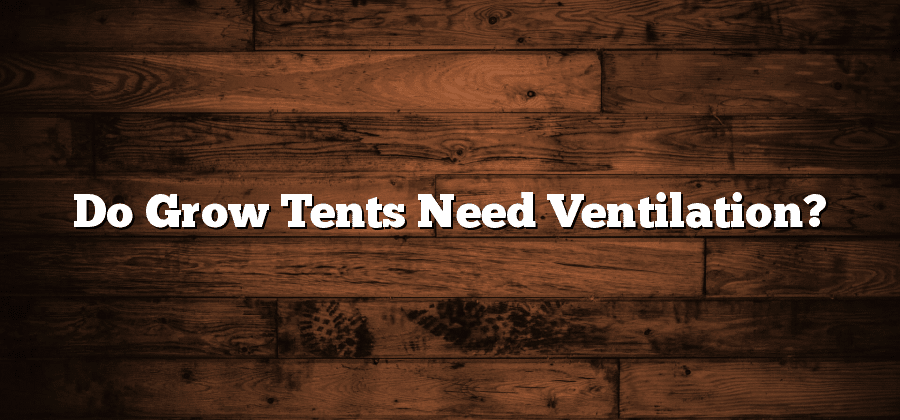Importance of Air Circulation in Grow Tents
Maintaining proper air circulation in grow tents is crucial for the successful growth and development of plants. Adequate airflow helps in several ways, including preventing the buildup of excessive heat, reducing the risk of pests and diseases, and promoting healthy transpiration.
One of the primary benefits of air circulation is the regulation of temperature. In a grow tent, heat can quickly accumulate, especially when using powerful lights or in hot climates. Good air circulation allows for the removal of hot air and the exchange of cooler air, preventing the temperature from reaching levels that are detrimental to plant growth. This is particularly important during the summer months or when growing in enclosed spaces where natural ventilation is limited. Additionally, proper air circulation prevents pockets of stagnant air, which can lead to the growth of mold, mildew, or other harmful pathogens that could harm the plants.
Factors Affecting Air Quality in Grow Tents
Factors affecting air quality in grow tents can have a significant impact on the overall health and growth of plants. One of the primary factors is the presence of carbon dioxide (CO2). Higher levels of CO2 can promote better photosynthesis and plant growth. However, if the levels exceed a certain limit, it can have detrimental effects on the plants. Therefore, it is crucial to monitor and control the CO2 levels in the grow tents to maintain optimum air quality.
Another factor that can affect air quality is humidity. The ideal humidity level for plant growth varies depending on the stage of development. High humidity can lead to the growth of mold, mildew, and other harmful pathogens, which can negatively affect the plants. On the other hand, low humidity can cause dryness and wilting of the plants. Therefore, maintaining the appropriate humidity levels within the grow tents is essential to ensure healthy plant growth.
Potential Risks of Poor Ventilation in Grow Tents
Inadequate ventilation in grow tents can pose a significant risk to the health and productivity of plants. Without proper air circulation, plants can suffer from a lack of oxygen and the buildup of carbon dioxide. This can lead to stunted growth, nutrient deficiencies, and even death of the plants. In addition, poor ventilation can create a breeding ground for pests and diseases, as stagnant air provides the perfect conditions for their growth and spread. The lack of fresh air exchange also results in increased humidity levels, which can cause mold and mildew to develop on the plants and in the surrounding environment. All these factors combined can have detrimental effects on the overall success and yield of the grow tent operation.
Furthermore, the absence of adequate ventilation in a grow tent can also impact the temperature regulation within the enclosure. Without an efficient means of air exchange, heat can become trapped inside the tent, leading to high temperatures. This can be particularly problematic during the summer months or in regions with hot climates. Heat stress can cause plant wilting, leaf burn, and can even lead to the death of the plants if not addressed promptly. Additionally, high temperatures can disrupt the proper functioning of the plant’s metabolic processes, affecting photosynthesis and the overall nutrient uptake. Therefore, maintaining a well-ventilated environment is crucial to ensure optimal plant health and productivity in grow tents.
Understanding the Role of Ventilation in Controlling Temperature
In a grow tent, proper ventilation plays a crucial role in controlling temperature levels. Temperature regulation is essential for creating a favorable environment for plants to thrive. Ventilation aids in the removal of excessive heat, ensuring that the temperature remains within the desired range. By allowing fresh air to enter the grow tent and expelling hot air, ventilation helps to maintain an optimal temperature for plant growth.
One of the main factors that ventilation addresses is heat buildup. As plants undergo photosynthesis, they release heat into the surrounding air. Additionally, grow lights used in grow tents emit heat, which can easily accumulate and lead to temperature spikes. Without adequate ventilation, the concentration of heat inside the grow tent can become detrimental to plant health. On the other hand, proper airflow provided by ventilation systems facilitates the dissipation of heat, preventing excessive temperatures that could stunt plant growth or even cause irreparable damage.
While ventilation is crucial for temperature control, it also serves other purposes. Effective air circulation supports the plant’s transpiration process, preventing the buildup of excess humidity. Furthermore, CO2 enrichment, often used to enhance plant growth, requires proper ventilation to ensure efficient carbon dioxide exchange and maintain optimal levels. In addition, ventilation plays a role in controlling pests and diseases by decreasing excess moisture, which discourages the growth of harmful pathogens. Overall, ventilation in grow tents is a vital component in maintaining a balanced and controlled environment that nurtures healthy plant growth.






